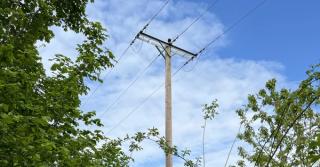
TNFD: The sustainability disclosure framework turning the tide
by Eoin Noble, Daniel Ashton
View post

As the consumption of electronic commodities has intensified during the digital era, waste streams within the UK have grown more complex, with increased quantities of electronic waste, commonly referred to as waste electrical and electronic equipment (WEEE) needing to be managed.
Waste law[1] in the UK requires the waste hierarchy to be applied when identifying waste management and / or disposal techniques for all waste, including WEEE. The waste hierarchy ranks waste management options according to what is best for the environment. It gives top priority to preventing waste in the first place. When waste is created, it gives priority to preparing it for re-use, then recycling, recovery, and then disposals (e.g., landfill).
Up to 75% of material found in WEEE items can be recycled[2]. Cables, batteries, circuit boards and metal can be recovered, and the material reformatted into new equipment. However, under the waste hierarchy, it is preferable for the WEEE to be re-used in its original format as this uses less energy and causes less impact to the environment than if the WEEE were to be recycled.
If WEEE is to be re-used then under some circumstances, it never becomes a waste, and can be classified as used electrical and electronic equipment (UEEE). Therefore, UK waste laws do not apply.
There are a set of characteristics[3] which indicate whether an item becomes UEEE and not WEEE:
Additionally, assessment of the proposed re-use of the item is required.
Despite guidelines being in place to clarify how to classify UEEE and WEEE, the distinction on when an item becomes a waste can be difficult to define. For example, in instances where equipment is only re-used for spare parts and some of the item may become waste.
There have been concerns in the press[4] about WEEE being unlawfully exported overseas, where it has been incorrectly classified as UEEE.
Corin Williams states in the MRW (Waste Management Industry News) magazine[5]:
“The WEEE Directive was designed to reduce the environmental impact of WEEE disposal and to ensure it was treated under best available techniques. Clearly this is not happening, with significant quantities either being treated in substandard processes or being exported illegally. The emphasis for further work must therefore be to identify this leakage and ensure the full weight of effective enforcement is brought to bear."
The illegally exported WEEE is often imported by developing countries that previously were not part of the Basel Convention’s Annex VII (e.g. Ghana, Nigeria & Pakistan) where respectable health and safety practices are lacking causing direct exposure of potentially hazardous waste to workers. While the Ban Amendment is not yet in legal force internationally, more countries are beginning to implement it.
It is imperative that electrical and electronic equipment is classified correctly to ensure that it is managed legally. If a company is found to be transferring waste illegally it risks sanctions (warnings, fines, remediation, improvement notices) that may impact the bottom line of their business. There are additional consequences to a business’ reputation that may be seen if equipment is not classified correctly, for example there may be increased interest from stakeholders on environmental performance. Client relationships can also be negatively impacted through contractual arrangement metrics (e.g., environmental compliance performance indicators), and finally relationships with the local community through nuisance and planning consent requirements.
The Environment Management, Permitting & Compliance (EMPC) team at SLR have an in-depth working knowledge of current UK and European Environmental and Sustainability Legislation; and are regularly involved in assisting companies with managing their compliance requirements under UK waste law.
Specifically, SLR have a wealth of experience in helping define where EEE becomes UEEE or WEEE.
If there are any questions on managing legal compliance in accordance with environmental and waste legislation, our team would be more than happy to provide support.
[1] The Waste (England and Wales) Regulations 2011 (as amended); the Waste (Scotland) Regulations 2011 (as amended) and the Waste Regulations (Northern Ireland) 2011 (as amended).
[2] How electrical recycling works | The Facts - Recycle Your Electricals
[3] Defined by the European Commission Waste Shipments Correspondents’ Guidelines No 1 (January 2020).
[4] Holes_in_the_Circular_Economy-_WEEE_Leakage_from_Europe.pdf (ban.org)
[5] "Treatment firms' warning over unreported WEEE" by Corin Williams, 28 September 2018, MRW Magazine.

by Eoin Noble, Daniel Ashton

